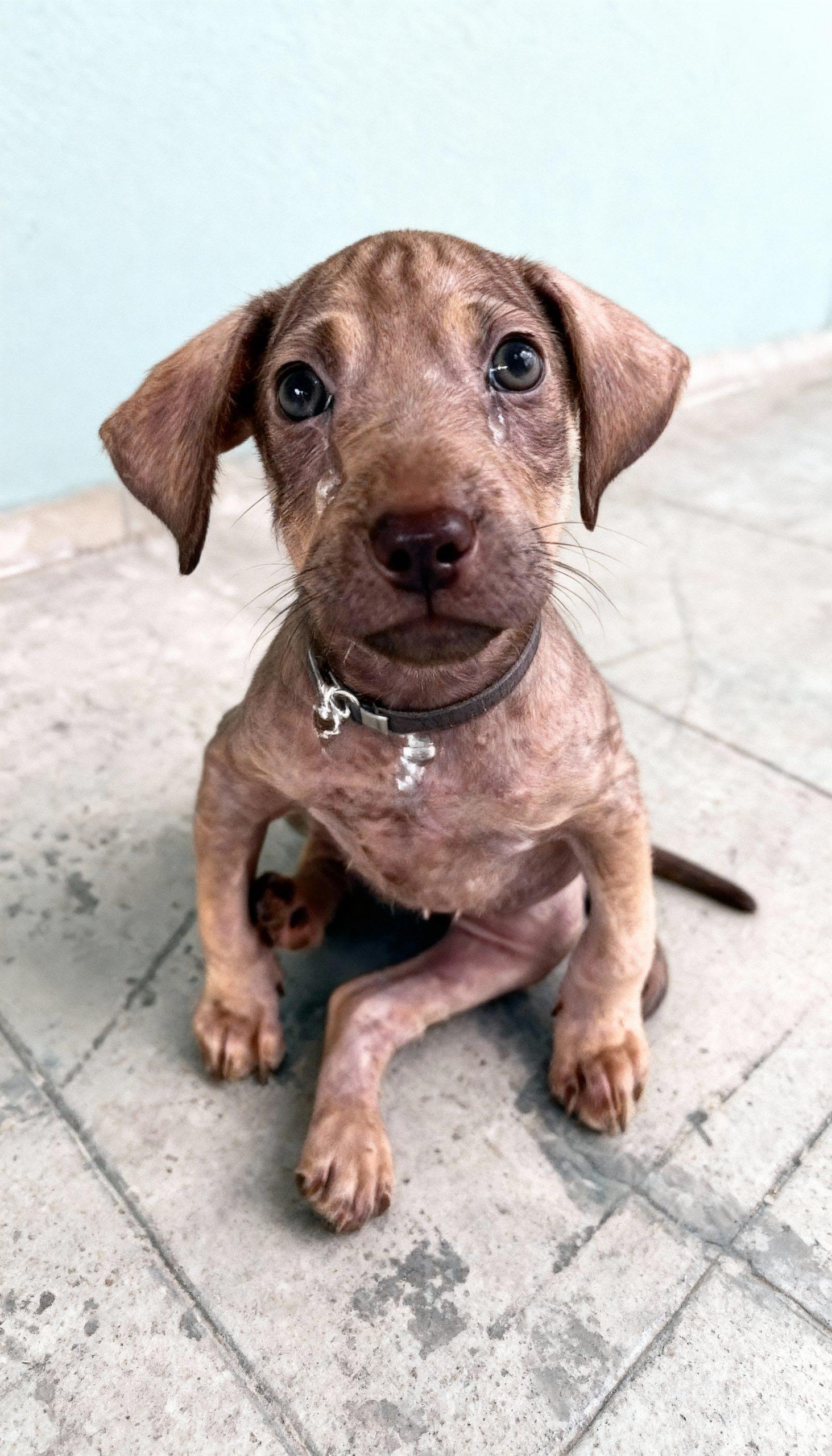In the quiet corners of our communities, often unseen and unheard, a silent struggle unfolds for countless animals. This struggle is particularly poignant for those suffering from neglect, their once vibrant spirits dimmed by hardship and lack of care. The image before us captures one such soul—a small puppy, its eyes reflecting a depth of vulnerability that tugs at the heartstrings. This is not just a picture of a sad dog; it is a profound testament to the widespread issue of animal neglect, a stark reminder of the responsibilities we bear towards the creatures sharing our world. The puppy’s thin frame, visible skin issues, and tear-filled eyes speak volumes about its past, hinting at a journey marked by deprivation. Yet, even in this state, there’s an undeniable spark, a fragile flicker of hope that suggests an innate will to survive and thrive. This article delves into the critical aspects of animal neglect, using this puppy’s story as a focal point to explore the causes, consequences, and, most importantly, the pathways to recovery and the crucial role each of us plays in offering these neglected paws a second chance at a life filled with love, comfort, and dignity.

Causes of Neglect: A Complex Web
Animal neglect is rarely a straightforward issue; it often stems from a complex interplay of socioeconomic factors, lack of awareness, and sometimes, even malicious intent. Poverty can render owners unable to afford proper nutrition, veterinary care, or even basic shelter. Mental health issues, such as depression or hoarding disorders, can severely impair an individual’s ability to care for themselves, let alone their pets. Furthermore, a simple lack of education about animal husbandry can lead to unintentional neglect, where owners are unaware of the specific dietary, medical, or environmental needs of their pets. In some unfortunate cases, neglect is a deliberate act, a conscious decision to deprive an animal of essential care, often fueled by cruelty or indifference. Understanding these underlying causes is crucial for developing effective intervention and prevention strategies, moving beyond simple condemnation to address the root of the problem.

The Visible Scars: Physical and Emotional Toll
The most immediate and heartbreaking consequences of neglect are evident in the physical condition of animals like the puppy in our image. Malnutrition leads to emaciation, dull coats, and a weakened immune system, making them susceptible to a myriad of diseases. Untreated skin conditions, infestations of fleas, ticks, and mites, and dental problems are common indicators of prolonged neglect. Beyond the visible, the emotional and psychological scars run deep. Neglected animals often exhibit fear, anxiety, aggression, or extreme timidity. They may struggle to trust humans, having experienced only hardship and cruelty at their hands. The process of rehabilitation therefore extends far beyond physical healing, requiring patient and consistent behavioral work to help them overcome their trauma and learn to trust again. It is a long road, but one that is immensely rewarding for both the animal and its caregivers.

A Journey to Recovery: Medical Care and Rehabilitation
For animals rescued from neglect, the journey to recovery begins with immediate and comprehensive veterinary care. This often involves addressing critical issues such as severe dehydration, malnourishment, and infections. Specialized diets are introduced to gradually restore their weight and nutrient levels, while skin conditions are treated with appropriate medications and baths. Beyond the initial medical intervention, a long-term rehabilitation plan is essential. This includes ongoing veterinary check-ups, vaccinations, and parasite control. For those with significant behavioral issues, working with professional animal behaviorists can be life-changing, helping them to desensitize to fears, build confidence, and learn appropriate social interactions. The goal is not just to heal their bodies, but to mend their spirits, preparing them for a life where they can feel safe and loved.

Fostering Hope: The Role of Shelters and Rescues
Animal shelters and rescue organizations are the frontline heroes in the fight against neglect. They provide a safe haven for abused and neglected animals, offering immediate medical attention, nourishing food, and a warm place to rest. Beyond these basic necessities, they are instrumental in the rehabilitation process, providing structured environments, training programs, and ample opportunities for socialization. These organizations operate largely on the dedication of volunteers and the generosity of donations, transforming the lives of countless animals every day. They work tirelessly to investigate cases of cruelty, educate the public, and advocate for stronger animal welfare laws. Without their unwavering commitment, many animals like our featured puppy would never have the chance to experience a life free from suffering.







